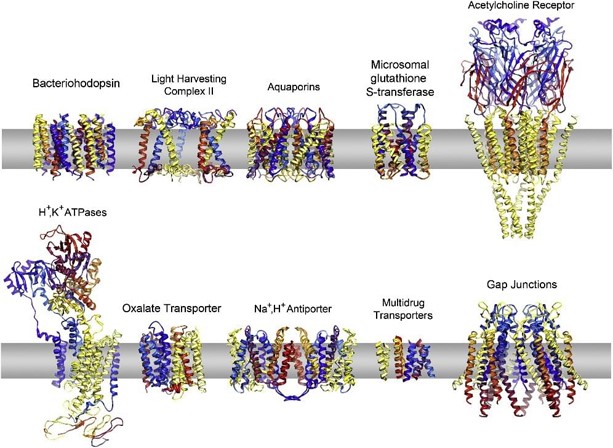Electron Crystallography Services
Over the last decade, electron crystallography has been used to provide many important insights into the structures and functions of proteins that belong to many different protein families. It is a powerful technique for the study of membrane protein structures and functions in a lipid environment (Figure 1). When well-ordered, two-dimensional crystals are obtained for the membrane protein, structures of both the protein and lipids can be determined. Creative Biostructure has developed a unique and powerful UniCrys™ Electron Crystallography platform for studying protein structures, especially membrane proteins at the atomic resolution and in an environment closely mimicking the native cell membranes.
Besides, Creative Biostructure can offer integrated services for the whole spectrum of electron crystallography, including but not limited to protein production, expression, 2D crystallization and structure determination (including that of interacting water and lipid molecules). After obtaining the structure of protein-lipid complex, we provide further analysis on the lipid-protein interactions.
 Figure 1. Gallery of selected membrane protein structures determined by electron crystallography.
Figure 1. Gallery of selected membrane protein structures determined by electron crystallography.
Structure determination by electron crystallography can be lengthy and challenging. Major bottlenecks include sample preparation, crystal growth, crystal screening, data collection and the subsequent processing. Scientists in Creative Biostructure handle these challenges successfully by studying the structures of membrane proteins in a lipid environment. Coupled with the ability to visualize the charged states of proteins, electron crystallography has quickly become instrumental in deciphering the functional mechanism of ion channels, symporters and antiporters. Our scientists are currently developing more tools and methods for the above-mentioned bottlenecks. Thus, it is expected that more structures will be accurately determined by these techniques in the near future.
 Figure 2. Equipment and facilities for sample preparation, data collection and analysis using Electron Crytallography.
Figure 2. Equipment and facilities for sample preparation, data collection and analysis using Electron Crytallography.
Please feel free to contact us for a detailed quote!
Ordering Process
References
Shi D, et al. (2013) Three-dimensional electron crystallography of protein microcrystals. Elife 2:e01345.
